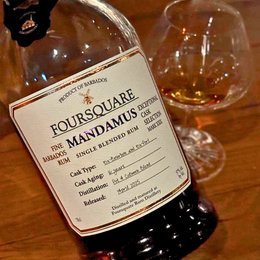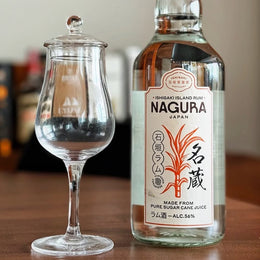It’s been a while since I've left a rum review here. In the span of that time, the Facebook group Ministry of Rum (MoR) has become questionable. An admin change brought about by avarice has resulted in (an initially) opaque and questionable changes.
The main reason for the change was to try and monetize MoR. To accomplish this, the group has to be more friendly to brands. This led to some members who left truthful and critical comments getting banned. With “negativity” being discouraged, plenty of the group’s knowledgeable rum enthusiasts left. An exodus of members, who I assume wanted to understand rum better, followed.
(If you’re interested in learning more about this issue, this article by Rum Revelations does a way better job at discussing it.)
This issue reminded me that rum education still has a long way to go. Now that a good resource for learning has been compromised, those who left MoR will be looking for other learning platforms. So I’m going to try and tackle more basic rum issues again here.
We all know that money talks. So a lot of brands still lie about various factors via throwing marketing money around to make a quick buck and create their own narrative. A few of the common trust issues largely revolve around how old the rum really is, the label not indicating if a rum has been sweetened and a rum’s true provenance.

This MoR debacle led me to realize something ironic. People usually want honesty in their lives. It’s not uncommon to see someone we know on social media or in real life occasionally express displeasure with being lied to. When a politician doesn’t keep a promise or gets caught in a scandal, we are enraged. When we find out a friend lied to us, we become disappointed. Yet, for some reason, when it comes to material things, a lot of us don’t really mind it.
Why are people like this? I can only speculate. Do they prefer escapism in which they live the lie of a lifestyle that some brands promise? Or are they aware of the lie but don’t mind it as they don’t see it as affecting them in a negative way?
The most popular example of a rum brand being dishonest about the rum’s age is Diageo’s Ron Zacapa Solera 23; Which they claim as a “23 year old” rum. Another would be Flor De Cana (FDC). FDC became notorious through this Vice article in 2015. It talked about how a lot of their cane field workers were dying from chronic kidney disease (CKD). CKD is mentioned to be a common issue in equatorial areas. Which most likely means they’re not the only employers to have workers suffer from this silent epidemic. It just so happened that they got singled out. As a result, a lot of bars boycotted the brand. Since then, they’ve addressed this issue. Their marketing now consists of them being proud of how they’ve become fair trade certified, sustainable and carbon neutral.
What they haven’t fixed yet is their use of fake age statements. There’s always been suspicion of their products using fake age statements due to their use of the term “slow aged”. In this Bartender at Large podcast episode from 2018, one of the brand’s ambassadors came forward with them averaging the age of their rum. By this, they mean that they blend rum of different ages of rum to create their various expressions. The example used in the podcast was the formula for their “12 year” expression; It consists of rum aged from 9 to 15 years. This is different from the usage of age statements that’s being used by Scotch, Japanese whisky and Bourbon. If this rule was followed, the FDC “12 year old” should be labeled as FDC 9 year old. Rum produced and bottled in countries like Barbados and Jamaica also follow these rules.
Hopefully, as FDC grows, they start using honest age statements so consumers will have less knocks against them. Afterall, their rum has no additives aside from water. They’ve also fixed the CKD issue which got them boycotted. Maybe they can even increase the abv in the future.
Image is a sample bottle provided at Flor de Cana event.

Flor De Cana 12 - Review
Abv: 40%. £37.75 in The Whisky Exchange. $35.99 in Total Wine. $48 locally.
(notice that TWE only says “Flor De Cana 12”. No “year old” is included.)
Color: Muscovado sugar
On the nose: I get light and fleeting aromas of muscovado sugar, oak, vanilla, caramel and cinnamon. In between are subtle aromas of pears, all-spice and caramelized orange peel.
In the mouth: Like on the nose, the notes here are also light. But they last slightly longer. The texture is also not flat. There’s a bit more oiliness but not as oily as non chill-filtered 46% abv single malt. I get light tastes of muscovado sugar, coconut syrup sugar, oak, vanilla, croissant, honey and molasses. In between are subtle tastes of pears, caramel with salted butter, cinnamon and caramelized orange peel.
Sometimes, the caramel is slightly more intense.
Conclusion
A very approachable industrial column-distilled rum. I didn’t get any of the ethanol heat that I normally get from mass produced brands, pot-distilled or not. Yes, despite sounding like a newish brand, this is mass produced. The distillery also sells bulk rum.
Texture-wise, it’s also not as flat as other industrial column-distilled rum like Bacardi. The flavors are also not as thin.
Being distilled from an industrial column still, the distillate is light. So most of the flavors come from the cask influence. Which makes me think this brand would be a good recommendation for blended Scotch drinkers. Surely, they’ll also find this smooth as soon as they get rid of their rum prejudices. But, I wouldn’t recommend these to those who prefer meaty single malts Mortlach and Springbank. They’ll find it boring or too one-dimensional. In my experience, these folks tend to prefer more balanced rums like Foursquare and funkier rum from Jamaica.
Score: 5
(If I could change my score on the Bacardi 8, I’d make it a 4.)
|
John is a cocktail and spirits enthusiast born and raised in Manila. His interest started with single malts in 2012, before he moved into rum and mezcal in search of malterntaitves – and a passion for travel then helped build his drinks collection. |







